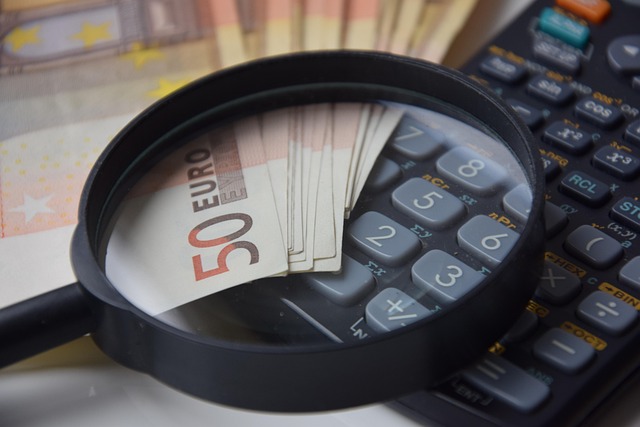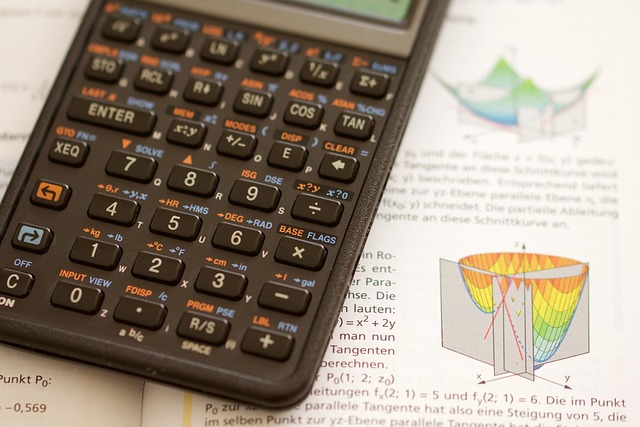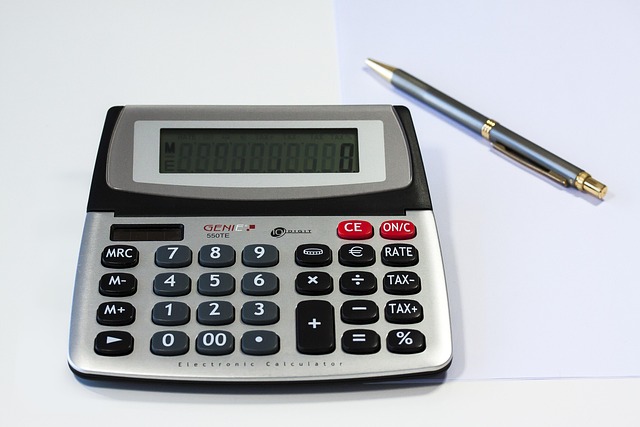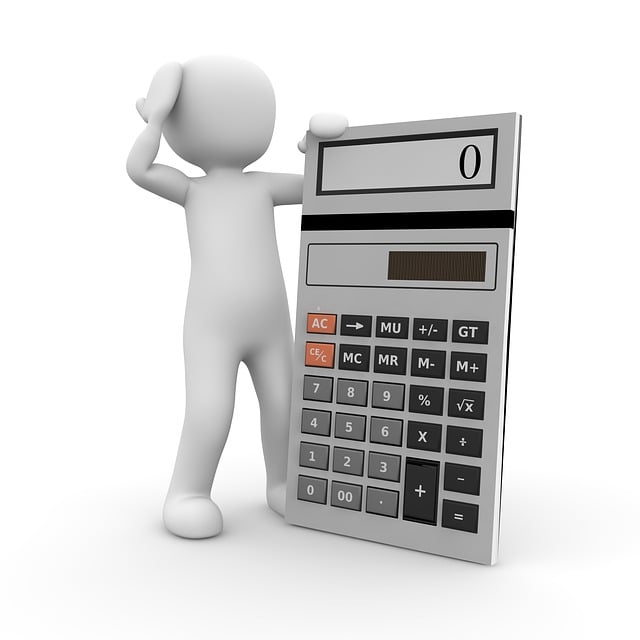How to Calculate Volume in Trading: Practical Formulas & Examples
Author: Jameson Richman Expert
Published On: 2025-11-04
Prepared by Jameson Richman and our team of experts with over a decade of experience in cryptocurrency and digital asset analysis. Learn more about us.
How to calculate volume in trading is a fundamental question for traders and analysts who want to confirm moves, identify liquidity, and improve timing. This article explains what trading volume is, why it matters, the different ways to measure it, and step-by-step formulas (with worked examples) you can use on stocks, crypto, futures, and forex. You’ll also get practical strategies, tools, and links to data sources and exchanges to put these volume calculations into live practice.

Table of contents
- What is trading volume?
- Why volume matters for traders
- Types of volume and data sources
- Basic volume calculations
- Advanced volume measures and indicators
- Worked examples: step-by-step calculations
- Using volume across markets and timeframes
- Tools, APIs and exchanges to get accurate volume data
- Volume-based trading strategies and rules
- Risk, fees and practical considerations
- Checklist & next steps
What is trading volume?
Trading volume is the total quantity of an asset traded during a given period. For equities, volume is usually the number of shares traded; for futures and crypto, it's the number of contracts or coins. Volume measures market activity and liquidity, showing how many participants are transacting and validating price moves. For a concise definition, see the Investopedia entry on volume.
High authority resource: Trading volume — Wikipedia
Additional reference: Volume — Investopedia
Why volume matters for traders
- Confirmation of price moves: Price moves on high volume are more likely to continue. A breakout with strong volume suggests institutional participation.
- Liquidity and execution: Higher volume generally means tighter spreads and less slippage when entering/exiting positions.
- Identifying reversals: Volume divergences (price up but volume falling) can warn of weakening trends.
- Risk management: Using volume to size positions and estimate likely slippage during order execution.
- Filtering noise: Volume filters help traders avoid false breakouts in low-volume environments.

Types of volume and data sources
Understanding the type of volume you’re looking at is critical because each market reports volume differently.
- Share/contract volume: Number of shares or contracts traded (standard for stocks and futures).
- Dollar volume: The total monetary value traded = sum(price × quantity). Useful for comparing liquidity across assets with different prices.
- Tick volume: Counts the number of price changes (commonly used in forex because centralized trade volume isn’t available). Tick volume is a proxy, not true traded volume.
- On-chain volume: Amount of cryptocurrency transacted on the blockchain, which differs from exchange-traded volume (on-chain volume excludes off-chain exchange internal transfers).
For crypto traders, remember that exchange-reported volume can vary and sometimes be inflated; consider reading about exchange costs and fee structures to fully understand net trading outcomes. See this guide on spot fees and exchange costs for context: Understanding Spot Fees & Exchange Costs (CryptoTradeSignals).
Basic volume calculations
Below are the most common, straightforward volume computations you’ll use in trading and analysis.
1. Aggregate volume for a period
Formula: Total Volume = Σ Volume_i (sum of volume for each bar/candle in the period)
Example: If daily volumes for 5 days are 100k, 120k, 80k, 200k, and 150k shares, Total Volume = 100k + 120k + 80k + 200k + 150k = 650k shares.
2. Dollar volume (value traded)
Formula: Dollar Volume = Σ (Price_i × Volume_i)
Example: If 1,000 shares traded at $25 and 500 shares at $26, Dollar Volume = (1,000 × 25) + (500 × 26) = 25,000 + 13,000 = $38,000.
Dollar volume is excellent when comparing liquidity across assets with very different prices (e.g., comparing a $1 coin vs. a $1,000 stock).
3. Average daily volume (ADV)
Formula: ADV = (Σ Daily Volume over N days) / N
Example: Using the 5-day volumes above, ADV = 650k / 5 = 130k shares/day. ADV helps set realistic expectations for order size relative to market capacity.
Advanced volume measures and indicators
Beyond raw totals, several volume-based indicators are widely used. These combine price and volume data to provide directional or momentum signals.
Volume Weighted Average Price (VWAP)
Definition: VWAP is the cumulative dollar value traded divided by cumulative volume for the period. Traders use it as an intraday benchmark for fair value.
Formula (intraday):
VWAP_t = (Σ (Price_i × Volume_i) from start to t) / (Σ Volume_i from start to t)
Interpretation: Price above VWAP suggests buying strength; price below suggests selling pressure. VWAP is commonly used by institutions to minimize market impact.
On-Balance Volume (OBV)
Definition: OBV is a running total that adds volume on up days and subtracts volume on down days. It highlights the accumulation or distribution of volume relative to price.
Formula:
- If Close_t > Close_{t-1}, OBV_t = OBV_{t-1} + Volume_t
- If Close_t < Close_{t-1}, OBV_t = OBV_{t-1} - Volume_t
- If Close_t = Close_{t-1}, OBV_t = OBV_{t-1}
Interpretation: Rising OBV during price increases confirms strength; falling OBV during price increases suggests divergence and potential reversal.
Money Flow Index (MFI)
Definition: MFI uses price and volume to measure buying and selling pressure. Unlike RSI, it incorporates volume (often called “volume-weighted RSI”).
High-level formula steps:
- Typical Price = (High + Low + Close) / 3
- Raw Money Flow = Typical Price × Volume
- Separate positive and negative money flows by comparing Typical Price to the previous period.
- Money Flow Ratio = (Sum of Positive Money Flow over N periods) / (Sum of Negative Money Flow over N periods)
- MFI = 100 − (100 / (1 + Money Flow Ratio))
Interpretation: MFI above 80 indicates overbought; below 20 indicates oversold (parameters customizable).
Accumulation/Distribution Line (A/D)
Definition: A/D links price and volume by weighting volume by where the close sits within the high-low range, offering a sense of whether volume is accumulating or distributing at higher/lower prices.
Formula (per bar):
Money Flow Multiplier = ((Close − Low) − (High − Close)) / (High − Low)
Money Flow Volume = Money Flow Multiplier × Volume
A/D = previous A/D + Money Flow Volume
Volume Profile and Volume-By-Price
Volume profile shows traded volume at specific price levels during a period. It’s not formulaic like VWAP but computed by summing volumes at price bins. Very useful for identifying high-volume nodes (HVNs) and low-volume nodes (LVNs) — areas of value and potential support/resistance.

Worked examples: step-by-step calculations
Below are full worked examples including VWAP and OBV to make the calculations concrete.
Example A — Calculating VWAP for an intraday series
Suppose 5 trades occur during the first hour:
- Trade 1: Price = $100, Volume = 200 shares
- Trade 2: Price = $101, Volume = 500 shares
- Trade 3: Price = $100.5, Volume = 300 shares
- Trade 4: Price = $102, Volume = 100 shares
- Trade 5: Price = $101.5, Volume = 400 shares
Step 1: Compute Price × Volume for each trade:
- 1: 100 × 200 = 20,000
- 2: 101 × 500 = 50,500
- 3: 100.5 × 300 = 30,150
- 4: 102 × 100 = 10,200
- 5: 101.5 × 400 = 40,600
Step 2: Cumulative dollar value = 20,000 + 50,500 + 30,150 + 10,200 + 40,600 = 151,450
Step 3: Cumulative volume = 200 + 500 + 300 + 100 + 400 = 1,500 shares
VWAP = 151,450 / 1,500 = $100.9667 ≈ $100.97
Example B — Calculating OBV for a 5-day period
Price closes and volumes:
- Day 1: Close $20, Volume 100k (start OBV = 100k)
- Day 2: Close $21, Volume 120k (OBV += 120k → 220k)
- Day 3: Close $20.50, Volume 80k (OBV -= 80k → 140k)
- Day 4: Close $22, Volume 200k (OBV += 200k → 340k)
- Day 5: Close $21.80, Volume 150k (OBV -= 150k → 190k)
Interpretation: OBV rose strongly during Day 4 rally, confirming accumulation. The drop on Day 5 removed some OBV, indicating selling pressure but the net OBV remains above Day 1.
Using volume across markets and timeframes
Volume behaves differently in different markets:
- Stocks & ETFs: Exchange-reported share volume is reliable; use ADV and dollar volume for liquidity checks.
- Futures: Contract volume and open interest give a picture of participation and commitment. Exchanges like CME report official volume and open interest.
- Crypto: Exchange volume varies by venue; consider on-chain metrics. Comparing on-chain vs exchange volume can reveal wash trading or internal transfers. For deeper context on crypto fees and transaction dynamics, this guide on Bitcoin transaction fees is useful: How Are Bitcoin Transaction Fees Calculated? (CryptoTradeSignals).
- Forex: True market volume is unavailable; use tick volume from your broker as a proxy. Aggregate across liquidity providers where possible.
Tools, APIs and exchanges to get accurate volume data
To calculate and backtest volume strategies you’ll need reliable data. Below are common sources and platforms:
- Exchange APIs (crypto): Binance, Bybit, Bitget, MEXC and others offer REST and WebSocket APIs with trade-level and aggregated volume. Example exchange registration/referral links:
- Market data vendors: Bloomberg, Refinitiv, Quandl (now part of Nasdaq) — for professional-grade historical and real-time volume.
- Broker/platform data: Many retail platforms supply historical volume for backtesting (Interactive Brokers, TradingView, Thinkorswim, etc.).
- On-chain data: Glassnode, CoinMetrics and blockchain explorers for true on-chain transaction volumes.
Always validate exchange-reported volume — some venues report aggregated internal transfers that inflate apparent liquidity. For practical guidance on exchange costs and how fees impact net trading outcomes, read: Understanding Spot Fees & Exchange Costs.

Practical examples: Spreadsheet & Python approaches
Spreadsheet (Excel/Google Sheets):
- Import trade-level data or bar data with Price and Volume columns.
- Add a column for Price × Volume.
- Use SUM to compute total dollar volume and SUM of Volume for VWAP calculation.
- For OBV use a running formula: =IF(Close>PrevClose, PrevOBV+Volume, IF(Close
Python (pandas) — pseudo steps:
- Load CSV with timestamp, price, volume.
- Compute df['pv'] = df['price'] * df['volume'].
- Cumulative: df['cum_pv'] = df['pv'].cumsum(); df['cum_vol'] = df['volume'].cumsum(); df['vwap'] = df['cum_pv'] / df['cum_vol'].
- Compute OBV using vectorized operations comparing close to previous close.
Backtest volume strategies by simulating execution impacted by average daily volume and slippage; don’t forget to subtract fees and consider the fee structure from your exchange (maker/taker), which can materially affect profitability. For automated strategies, consider information about AI trading bot profitability and risk management: Can You Make Money with AI Trading Bots? (CryptoTradeSignals).
Volume-based trading strategies and rules
Here are actionable strategies that rely on volume calculations and how to implement them.
1. Breakout confirmation using volume
- Rule: Trade a breakout only if breakout candle has volume > X × ADV (e.g., 1.5× ADV) or above a percentile (e.g., 75th percentile of recent volumes).
- Why it works: Confirms participation beyond normal noise.
- Example: If ADV = 100k and breakout candle volume = 200k (2× ADV), treat as higher-probability breakout.
2. Volume spike fade
- Rule: Large volume spikes often precede short-term reversals; wait for a confirmation candlestick pattern (e.g., engulfing) before fading.
- Execution: Enter a contrarian trade with tight stop and reduce size due to unpredictability.
3. VWAP mean-reversion or trend-following
- Mean-reversion: Buy if price crosses below VWAP and shows volume drying up, expecting reversion to VWAP.
- Trend-following: Use intraday price staying above VWAP with rising VWAP as trending confirmation; add on low-VWAP pullbacks with increasing volume.
4. Volume divergence (OBV/MFI)
- Rule: If price makes a new high but OBV fails to confirm (lower high), reduce long exposure or prepare for reversal.
5. Volume profile support/resistance trades
- Rule: Use high-volume nodes as areas of value — trade range extensions or fade moves away from HVNs with appropriate stops.
Risk, fees and practical considerations
Calculating volume alone won’t make you profitable — you must combine it with execution strategy, fees awareness, and risk controls.
- Slippage: Large orders relative to ADV cause slippage. A common rule: limit market participation to a small percentage of ADV (e.g., 1–5%) to reduce market impact.
- Fees: Exchange fees (maker/taker, withdrawal fees) reduce net returns. For crypto spot trading, review exchange fees and cost structures to factor into backtests — see this overview of spot fees and exchange costs: Understanding Spot Fees & Exchange Costs.
- Data quality: Verify trade-level data, dedupe aggregated feeds, and beware of reported volumes that include internal transfers. Use multiple sources when possible.
- On-chain vs exchange volume: On-chain Bitcoin transaction fees and transaction volumes are measured differently than exchange trading volume — to understand fees and their relation to on-chain activity, see this guide: How Are Bitcoin Transaction Fees Calculated?.
- Algorithmic execution: If you use algorithms (market-making, VWAP slicing, or AI), ensure they consider volume, liquidity, and fee schedules. If evaluating AI trading bots, check their methodology, risk handling and costs in advance: AI Trading Bot Profitability & Risks.

Practical checklist before using volume in live trading
- Confirm the volume data source (exchange API, broker, or on-chain provider).
- Compute ADV and dollar volume; ensure your order size is well below a conservative % of ADV.
- Backtest strategies over multiple market regimes and subtract realistic slippage and fee assumptions.
- Use VWAP/OBV/MFI as confirmation layers rather than sole signals.
- Keep a trade log including volume context to refine rules over time.
Examples of calculation-based rules (template)
Use these templates and adapt parameters to your asset class and timeframe.
- Breakout Rule Template: Only enter breakout when breakout candle volume ≥ 1.5× ADV and close is above breakout level. Stop: below breakout candle low. Target: measured move or trailing stop.
- VWAP Intraday Template: If price > VWAP and vwapslope > 0 and intraday volume > 75th percentile of past 20 bars, enter long on pullback to VWAP. Stop: 0.5× ATR below entry.
- OBV Divergence Template: If price makes higher high but OBV makes lower high, reduce position size by 50% or exit and wait for reconfirmation.
Summary and next steps
Knowing how to calculate volume in trading gives you an edge in confirming moves, assessing liquidity, and designing execution-aware strategies. Start by mastering the basic formulas — total volume, dollar volume, ADV — then progress to VWAP, OBV, MFI and volume profile. Backtest thoroughly, account for fees and slippage, and use reliable data feeds from exchanges or vendors. If trading crypto, compare exchange volume against on-chain indicators and account for fee structures.
Action plan:
- Pull sample data from an exchange (for crypto: Binance, MEXC, Bitget, Bybit links above) and compute VWAP and ADV in a spreadsheet.
- Backtest a 2-rule strategy (e.g., breakout + volume filter) over multiple months and subtract realistic fees and slippage.
- Refine entry/exit using OBV or MFI divergence filters and run out-of-sample tests.

Further reading and authoritative references
- Trading volume — Wikipedia
- Volume — Investopedia
- CryptoTradeSignals articles referenced above:
If you want, I can produce a downloadable spreadsheet or a small Python script that computes VWAP, OBV, MFI and simulates simple volume-filtered breakout trades on historical data. Tell me your preferred asset and timeframe and I’ll tailor the example.